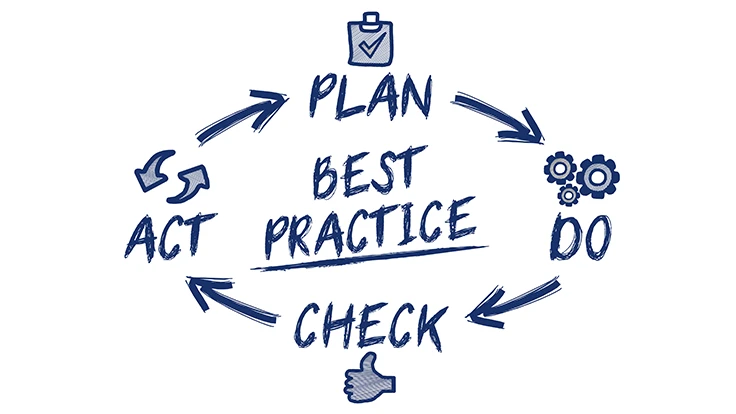
magele-picture | Adobe Stock
On Oct. 23, AmericanHort and Purdue University hosted a webinar discussing how the industry can adapt to the changing nursery landscape. The event, which was sponsored by Plant Sentry, featured an array of speakers. Tom Buechel, founder of Buechel Horticultural Solutions and a compliance officer for Nature Hills Nursery and Plant Sentry, kicked off the first session of the webinar.
As a seasoned nurseryman Buechel has seen it all, and he stresses the importance of a Systems Approach (SA) model to prevent catastrophe in the field. The SA model is a tailored check-down system with multiple checks at each level to prevent contaminated plants or invasive species from being stored or shipped. The SA model was first introduced to the food industry to prevent the spread of contaminated food and to increase sanitation protocols, but it has found a home in many nursery floor checklists.
“We want to prevent a fire from happening. But then there's also the aspect of emergency response: What happens if it does happen? And how quickly can you put that fire out? What options and what plans do you have in place?” he asks. “And having multiple plans, A, B and C — throughout your career —is going to be really, really, really important.”
In the plant and nursery sector, following the SA model boils down to public concern. Whether it’s pest, plant disease or invasive species affecting agricultural commodities or ergonomic crops, these issues can cause a lot of economic harm and drive up prices for consumers.
“We want to prevent those things. That's what the green industry is all about — proactively preventing things,” he says.
Getting started
Nurseries can get started by getting involved with a Systems Approach to Nursery Certification (SANC) program. SANC is a voluntary pilot program, and was developed by the National Plant Board, AmericanHort, the U.S. Department of Agriculture and many others. It was designed so nurseries and greenhouses can receive the state plant regulatory certification so they may domestically ship plants.
SANC is broken down into the following parts:
- Risk assessment
- Pest management plan
- SANC facility manual
- Internal audits
- Annual systems audit
- Two surveillance audits
First, the nursery identifies all the hazards, or critical control points (CCPs), in the facility that could lead to contamination. In this stage, the facility must take a progressive approach and scrutinize every operation — from shipping, receiving, or purchasing the plant materials, etc. — all the way across the board.
Once this is done, the team will focus on pest management, where they determine which pests are most likely to risk harming their crops. They must look at pest management from the scouting, shipping and receiving levels to determine an accurate predictive checklist. Once this is done, the list of pests is entered into tracking software.
Data collection is integral to the green industry, says Buechel. From a production standpoint (monitoring, plant scouting, record-keeping, documenting etc.), the facility must figure out its strengths and weaknesses. The end game is to create goals and learn how to improve those goals moving forward. As the younger generation replaces the aging workforce, it’s imperative to log data and display transparency as much as possible.
After that, the nursery will compile its own SANC facility manual with a set of specific guidelines that acts as an internal guide. This holds the facility accountable when it’s time for an audit, either internally or externally by regulatory officials.
Traditional inspections are typically completed once a year, which Buechel says is a bad idea. “You don't want to base things off one day a year, because we all know that pests, disease and those types of things happen way more often than one day a year,” he says. “We have to be doing it all the time.”
The SANC checklist holds nurseries and greenhouses accountable every day, with a daily focus on the different processes and the written verification to back it up.
He likens SANC prevention to an Easter egg hunt. “If you could put all employees' eyes on the plants from a scouting perspective, that's a huge win for your operation,” he says. If only one person tries to do it — for example, the scouting manager — they will likely miss something.
To ensure success, provide workers with the right tools, train them to use them and teach them how to assess something that doesn’t look right.
“Even if they don't know what it is, that's a huge win for your operation. Because you may have just prevented major crop loss, on something that one person just can't handle on an entire operation,” says Buechel.
And while SANC relies on prevention, Buechel notes we don't live in a perfect world. If something happens, it’s imperative to have an emergency response in place so the facility can address the issue.
“It's about being accountable. When you're accountable, it makes you look pretty good at the end of the day when something not so good happens,” says Buechel.
For more information on Plant Sentry, read our feature story here.
Latest from Greenhouse Management
- Anthura acquires Bromelia assets from Corn. Bak in Netherlands
- Top 10 stories for National Poinsettia Day
- Langendoen Mechanical hosts open house to showcase new greenhouse build
- Conor Foy joins EHR's national sales team
- Pantone announces its 2026 Color of the Year
- Syngenta granted federal registration for Trefinti nematicide/fungicide in ornamental market
- A legacy of influence
- HILA 2025 video highlights: John Gaydos of Proven Winners





